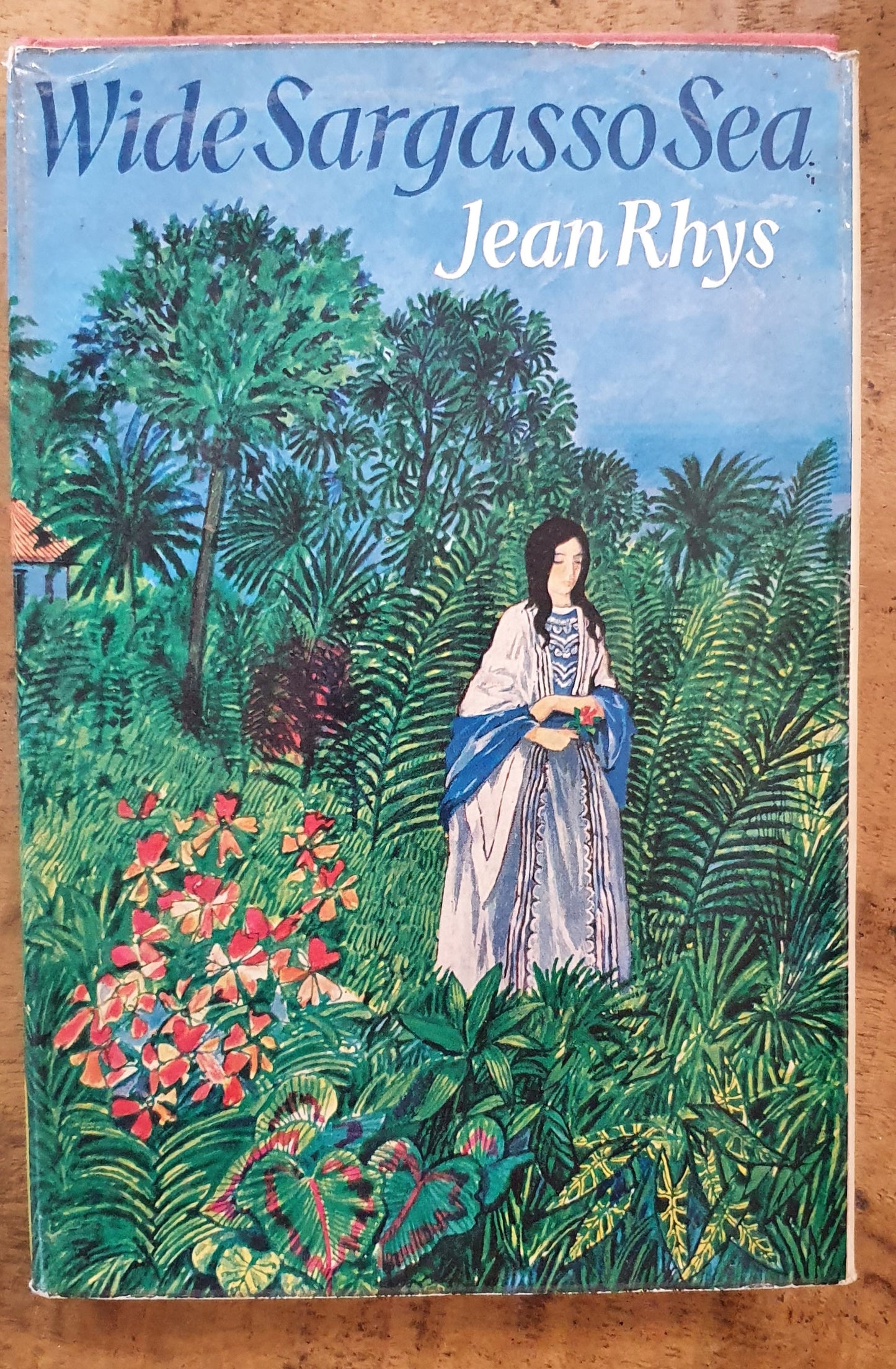Minor Canon
Jean Rhys hat
Couldn't load pickup availability
Jean Rhys (born Ella Gwendoline Rees Williams; 1890–1979) was a British novelist who was born and grew up in the Caribbean island of Dominica. From the age of 16, she mainly resided in England, where she was sent for her education. She is best known for her novel Wide Sargasso Sea (1966), written as a prequel to Charlotte Brontë's Jane Eyre. In 1978, she was appointed a Commander of the Order of the British Empire (CBE) for her writing.
Rhys's father, William Rees Williams, was a Welsh medical doctor and her mother, Minna Williams, née Lockhart, a third-generation Dominican Creole of Scots ancestry. ("Creole" was broadly used in those times to refer to any person born on the island, whether they were of European or African descent, or both.) Her mother's family had an estate, a former plantation, on the island. Rhys was educated in Dominica until the age of 16, when she was sent to England to live with an aunt, as her relations with her mother were difficult. She attended the Perse School for Girls in Cambridge, where she was mocked as an outsider and for her accent.
Unable to train as an actress and refusing to return to the Caribbean as her parents wished, Williams worked with varied success as a chorus girl, adopting the names Vivienne, Emma, or Ella Gray. She toured Britain's small towns and returned to rooming or boarding houses in rundown neighbourhoods of London.
After her father died in 1910, Rhys appeared to have experimented with living as a demimondaine. She became the mistress of wealthy stockbroker Lancelot Grey Hugh Smith, whose father Hugh Colin Smith had been Governor of the Bank of England. Though a bachelor, Smith did not offer to marry Rhys, and their affair soon ended. However, he continued to be an occasional source of financial help. Distraught by events, including a near-fatal abortion (not Smith's child), Rhys began writing and produced an early version of her novel Voyage in the Dark. In 1913, she was self-employed for a time in London.
During the First World War, Rhys served as a volunteer worker in a soldiers' canteen. In 1918, she worked in a pension office.
In 1924, Rhys came under the influence of English writer Ford Madox Ford. After meeting Ford in Paris, Rhys wrote short stories under his patronage. Ford recognised that her experience as an exile gave Rhys a unique viewpoint, and praised her "singular instinct for form" in his preface to her debut short story collection, The Left Bank and Other Stories (1927). It was Ford who suggested she change her name from Ella Williams to Jean Rhys. At the time her husband was in jail for what Rhys described as "currency irregularities." Rhys moved in with Ford and his long-time partner Stella Bowen. An affair with Ford ensued, which she portrayed in fictionalised form in her novel Quartet (1928).
In After Leaving Mr. Mackenzie (1931), the protagonist, Julia Martin, is a more unravelled version of Marya Zelli, romantically dumped and inhabiting the pavements, cafes and cheap hotel rooms of Paris. With Voyage in the Dark (1934), Rhys continued to portray a mistreated, rootless woman. Here the narrator, Anna, is a young chorus girl who grew up in the West Indies and feels alienated in England. Good Morning, Midnight (1939) is often considered a continuation of Rhys's first two novels. Here, she uses modified stream of consciousness to voice the experiences of an ageing woman, Sasha Jansen, who drinks, takes sleeping pills, and obsesses over her looks, and is adrift again in Paris.
Good Morning, Midnight, acknowledged as well-written but deemed depressing, came as World War II broke out and readers sought optimism. This seemingly ended Rhys's literary career. In the 1940s, Rhys largely withdrew from public life. From 1955 to 1960, she lived in Bude, Cornwall, where she was unhappy, calling it "Bude the Obscure", before moving to Cheriton Fitzpaine, a small village in Devon.
After a long absence from the public eye, she was rediscovered by Selma Vaz Dias, who in 1949, placed an advertisement in the New Statesman asking about her whereabouts, with a view to obtaining the rights to adapt her novel Good Morning, Midnight for radio. Rhys responded, and thereafter developed a long-lasting and collaborative friendship with Vaz Dias, who encouraged her to start writing again. This encouragement ultimately led to the publication in 1966 of her critically acclaimed novel Wide Sargasso Sea. She intended it as an account of the woman whom Rochester married and kept in his attic in Jane Eyre. Begun well before she settled in Bude, the book won the notable WH Smith Literary Award in 1967. She returned to themes of dominance and dependence, especially in marriage, depicting the mutually painful relationship between a privileged English man and a Creole woman from Jamaica made powerless on being duped and coerced by him and others.
From 1960, and for the rest of her life, Rhys lived in Cheriton Fitzpaine in Devon that she once described as "a dull spot which even drink can't enliven much." Characteristically, she remained unimpressed by her belated ascent to literary fame, commenting, "It has come too late." In an interview shortly before her death she questioned whether any novelist, not least herself, could ever be happy for any length of time: "If I could choose I would rather be happy than write... if I could live my life all over again, and choose...." Jean Rhys died in Exeter in 1979, at the age of 88, before completing an autobiography, which she had begun dictating only months earlier.
• 100% chino cotton twill
• Unstructured, 6-panel, low-profile
• 6 embroidered eyelets
• 3 ⅛” (7.6 cm) crown
• Adjustable strap with antique buckle
• Blank product sourced from Vietnam or Bangladesh









